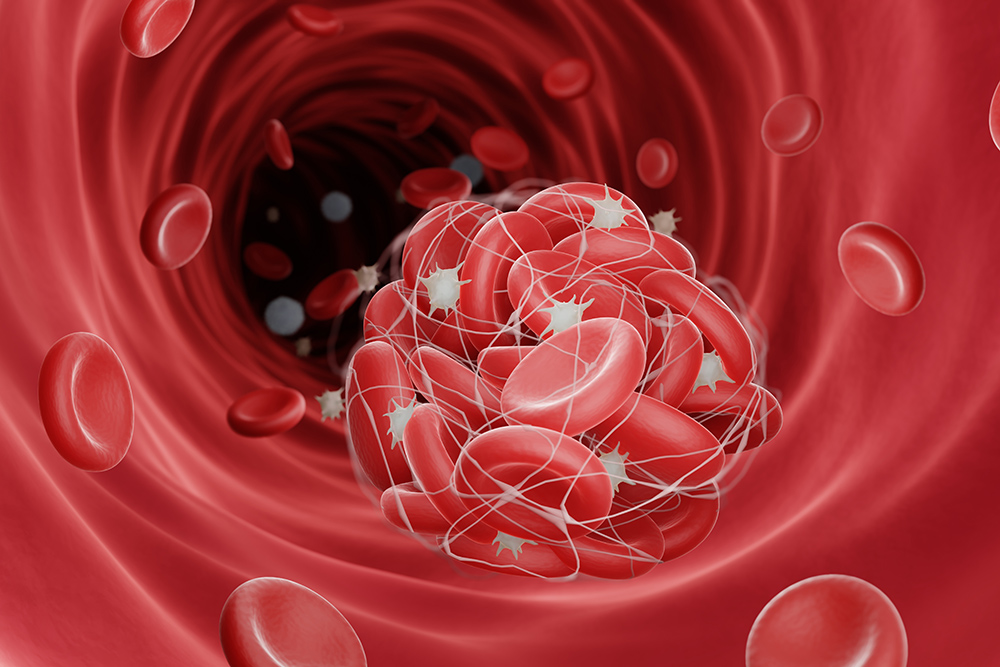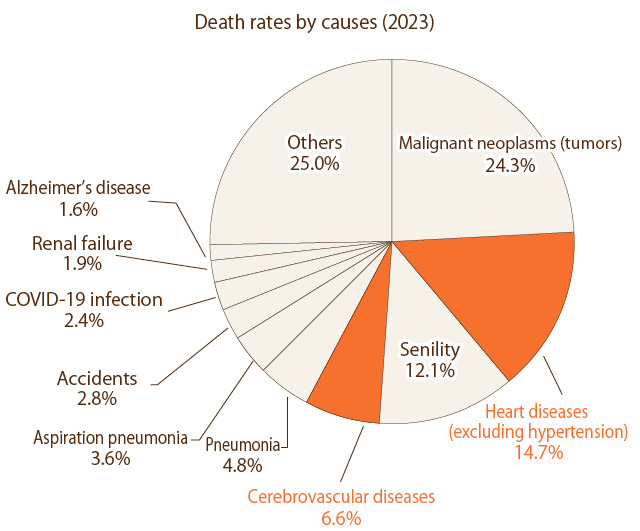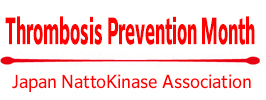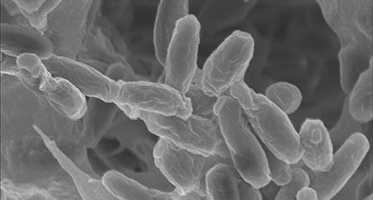
Thrombosis
What is thrombosis?
Thrombosis is the blockage of blood flow to an organ due to a blood clot in a blood vessel.
As a result, the death of cells in peripheral organs is called an infarction, and is classified as a cerebral infarction or myocardial infarction depending on the location where the blood clot clogs. Deep vein thrombosis (economy class syndrome), caused by remaining in the same position for an extended period of time in a small cabin when flying, is also one type of thrombosis.
The Mechanism of Blood Clot

How do blood clots form in blood vessels?
For example, blood in normal condition does not clot in blood vessels, and the clotting factor works normally to stop bleeding when you got injured.
When this mechanism is disrupted, thrombus starts be formed easily in your blood vessels, and it is said that three factors are involved: “blood,” “blood vessels,” and “blood flow (*).
*Tetsumei Urano, Yuko Suzuki, Hayato Ihara, Hideo Mogami
Risk factors for thrombosis: components in blood and on vascular endothelial cells
Thrombosis is actually very familiar!?
Currently, the most common death among Japanese people is cancer (24.3%), Second as myocardial infarction and other cardiac diseases (14.7%), third as senility (12.1%), and forth as cerebrovascular diseases such as stroke (6.6%). In other words, about 20% of Japanese people die from “blood vessel blockage or rupture” (according to the 2023 Vital Statistics by Ministry of Health, Labour and Welfare).

Prevention is necessary on a regular basis.

Due to changes in food style and lifestyle, the blood components are losing its balance, and blood with high cholesterol and neutral fat levels is increasing not only among the elderly but also among the young. Unhealthy blood is more likely to clot, and the fibrinolytic system that dissolves clots will also be weakened. In other words, people today are more likely to form blood clots, and those that have formed are less likely to be dissolved.
Thrombosis, such as myocardial infarction or cerebral infarction, is a disease caused by a blood clot that forms in the blood and clogs a blood vessel. In many cases, thrombosis develops suddenly without subjective symptoms, and the symptoms rapidly worsen with the onset of the disease. Even if the patient survives, there is a risk of recurrence and serious disability.
Prevention is the most important factor in dealing with thrombosis, which strikes suddenly on any given day. In order to prevent the formation of blood clots and to dissolve them once they have formed, it is necessary to improve one's lifestyle through exercise and food.
“Thrombosis Prevention Day”
Thrombosis Prevention Month has been held to educate people about the prevention of blood clots.
The Japan Nattokinase Association has designated January 20th as “Thrombosis Prevention Day” because January is the month when the highest number of people die from thrombosis (according to the Demographic Survey by the Ministry of Health, Labor and Welfare). And also because the word “clogging” of blood vessels and “20” are both Tsumaru in Japanese, therefore, the month starting from January 20th is designated as “Thrombosis Prevention Month” to actively educate people about the prevention of blood clots.

“Summer Thrombosis Alert”
Even in summer, it is necessary to pay attention to blood clots.

It is also necessary to pay attention to “thrombosis,” which is on the rise in extremely hot weather. In order to help people to get through the hot summer with good health, our association issues a “Summer Thrombosis Alert” to encourage people to prevent thrombosis.




